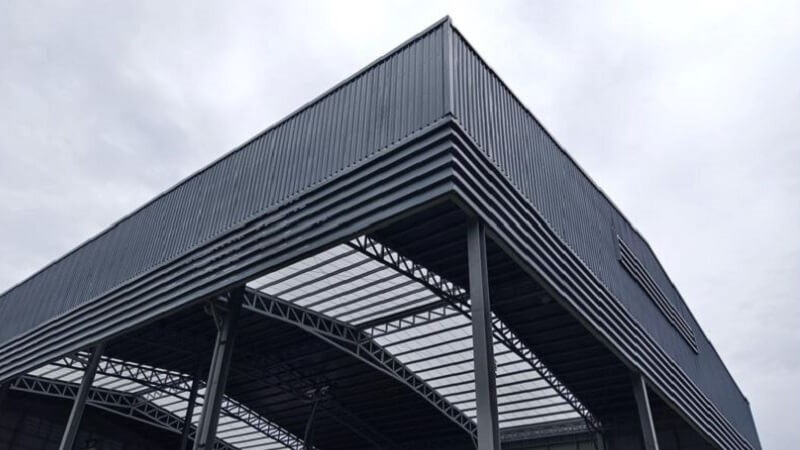Sustainability is becoming more popular since people are becoming more aware of the importance of keeping the environment safe while going for comfort. Many homeowners started looking for steel buildings for their comfort, ensuring that they were also a good choice for the environment.
These buildings are a great option for sustainable building since they combine efficiency, dependability, and environmental responsibility. We’ll examine how steel structures fit into eco-friendly house designs in this blog, emphasizing special features and examples that show their worth.
1. Durability and Longevity
Steel structures are a great option for environmentally friendly home construction since they are long-lasting and require minimal maintenance. Unlike traditional wood-frame structures, steel buildings are resistant to weather, pests, and decay, ensuring their structural integrity for many years. Over time, because of their durability, less resources are required, which lowers the overall environmental effect of the building process.
2. Energy-Efficiency
The ability of rigid steel buildings to be energy-efficient is one of their biggest benefits. Because of the material’s high thermal conductivity, it may be insulated well, lowering energy use and preserving pleasant interior temperatures. To further maximize their energy efficiency, steel structures may be constructed with solar panels and cutting-edge ventilation systems. Homeowners may dramatically decrease their carbon footprint and utility costs by adding these eco-friendly measures.
Moreover, thermal mass — a special quality that facilitates passive solar heating — can be included in steel structure designs. During the colder months, houses may be constructed to absorb, store, and release heat gradually by combining steel with other materials like concrete. As a result, there is less need for extra heating, which helps save energy and lower carbon emissions.
3. Recyclability
It may not be surprising that steel is a recyclable material and it’s considered 100% recyclable. Gathering used steel objects, compressing them into bales, and transporting them to a steel foundry are the steps involved in recycling steel. The bales are combined with other scrap steel there, then heated in a furnace to melt them. To make new steel goods, the molten steel is then put into molds. Steel does not lose strength when recycled repeatedly; therefore, this procedure helps conserve energy and cut waste.
4. Versatility and Customization
Homeowners may design distinctive and customized living areas with the unmatched adaptability and customization choices that steel structures provide. Steel may be used in a variety of architectural styles, from classic farmhouse structures to contemporary minimalist ones.
Steel constructions are incredibly flexible, enabling homeowners to plan residences that can readily accommodate additions or adjustments in the future. Because it eliminates the need for demolition and reconstruction — which may result in substantial waste and environmental disruption — this feature is especially advantageous for environmentally friendly projects.
5. Minimal Effect on the Environment
Steel structures may be built more quickly and effectively than traditional construction techniques, which reduces their negative environmental effects. Prefabricated steel components’ accuracy and effectiveness minimize worksite waste, use less energy during building, and decrease build times — all of which help to cut carbon emissions.
6. Integrated Water Management Systems
The capacity of steel structures to effortlessly incorporate water management systems into their designs is a quality that is frequently disregarded. Because of steel’s structural strength, sophisticated drainage techniques, rainwater harvesting systems, and green roofs may be easily integrated.
7. Reducing Waste with Precision Engineering
The accuracy with which steel buildings may be engineered is one of their most notable qualities. Before being delivered to the building site, steel components are normally cut, welded, and assembled to precise specifications in a controlled industrial setting. Because there is limited space for error and every component is made to match exactly with the others, this accuracy dramatically lowers material waste.
8. Resistance to Corrosion in Humid and Coastal Environments
Steel structures are perfect for environmentally friendly projects in humid or coastal areas because they may be built with sophisticated coatings that resist corrosion. This characteristic lessens the need for periodic repair or replacement by ensuring that the building retains its structural integrity and aesthetic appeal over time.
9. Fewer Foundation Requirements to Cause Less Noise Pollution
Because steel buildings are lighter than conventional brick or concrete constructions, they frequently only need a small base. Because it minimizes the environmental disruption caused by excavation and uses less concrete — a material with a high carbon footprint — this characteristic is especially advantageous for eco-friendly projects.
Steel constructions are a great option for eco-friendly housing projects because of their many special advantages. Beyond the fundamentals of robustness and energy efficiency, steel buildings offer thermal mass for passive solar heating and precise engineering that minimizes waste. Their resilience to corrosion, versatility, and need for a smaller base all contribute to their appropriateness for sustainable living.
Homeowners who choose inflexible steel constructions may support the larger objective of environmental sustainability in addition to having a strong and functional residence. For those wishing to construct with the future in mind, steel structures are a forward-thinking option because of these qualities as well as the useful advantages they provide.
